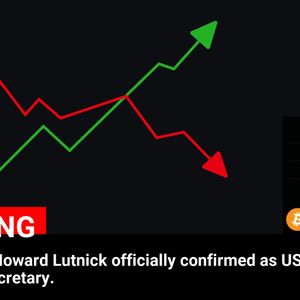Jupiter DEX announced plans to use part of its fees and buy back the JUP token. The buybacks will start from Monday, February 17, and will aim to build a JUP reserve for additional incentives. JUP tokens may get support from the first buybacks, starting Monday, February 17. The Jupiter DEX will use the proceeds from trading fees to build a JUP treasury, which will be locked for three years, per the announcement . we want more more jup. so buybacks start on monday. 50% of all protocol fees will go towards buying $JUP and locking it for 3 years. J4J — Jupiter (🐱, 🐐) (@JupiterExchange) February 13, 2025 The buybacks offset the recent Jupuary airdrop, which led to selling pressure. The buybacks will be announced through a dashboard coming next week. The buybacks will be scheduled at every hour, aiming to bring back as much JUP as possible for a vesting period of three years. The buyback decision comes after the Catstanbul event that burned 3B JUP, reducing the total supply to 7B tokens. Even the burn was not enough to push JUP from its lows, as it was still absorbing selling from the Jupuary airdrop. Jupiter will aggregate fees from all its services and activities, storing all proceeds in a wallet. The fees may be in the form of various tokens, as balances will be transparently posted through the public address. The Jupiter service will include fees from its perpetual futures trades, DCA service, and other routing tools. From the total fees, 50% will be swapped into SOL and USDC for development activities, explained Jupiter cofounder @sssionggg . The rest of the funds will be used for the JUP buybacks, with all purchases going through Jupiter’s own routing. The USDC and SOL will be kept in the team’s multisig wallet, while JUP will be locked in a new vault, the Litter Box, and kept for three years. Jupiter fees got a boost in February Jupiter achieved over $500K in fees for the past 24 hours, ranking 14th among Solana apps and protocols. For the past month, Jupiter DEX fees reached a total of $4.8M. The recent heightened activity saw Jupiter fees rally in February, rising far above their baseline. The current activity may allow the buying of up to $250K in JUP tokens. Currently, all JUP trading is at over $260M in 24 hours, of which $37M is concentrated on Binance. The buying will have a somewhat limited effect on the price, but over time, it may start to make a dent in circulating JUP. The pace of buybacks may vary, as Jupiter may produce a lower or higher level of daily fees. For Jupiter DEX, the spike in swaps happened after January 20, reflecting the launch of Official Trump (TRUMP) and other celebrity tokens. Jupiter total swaps remained higher than the previous baseline. The rally at the beginning of 2025 finally lifted Jupiter activity, after remaining relatively low during the expansion at the end of 2024. Jupiter fees got a boost in February, after the new wave of official celebrity tokens launching on Solana in the past three weeks. | Source: DeFi Llama Jupiter peaked at over 190K daily users on January 21. Currently, swaps and fees remain elevated, despite registering under 20K daily users . The decision for the buyback arrives after Jupiter posted some of its biggest fee gains in history, following peak Solana activity in the past few weeks. The DEX and the aggregator service were among the most widely used on Solana for optimal routing and faster swaps. Following the news, JUP briefly spiked to $0.86, then retreated to $0.83. The token is at the lower end of its three-month range, despite the protocol’s peak performance. JUP has 2.63B tokens in circulation, out of a total supply of 10B. Most JUP is habitually held in reserves and in various forms of staking. The token is expected to break out soon, recovering from the selling pressure of Jupuary tokens. JUP fell from a local peak at $1.22, as new recipients traded in 67% of the newly received tokens. Jupuary aimed to spread JUP to a wider audience, though most turned into sellers. In an optimistic scenario, the buyback would lock over 9% of the JUP supply. The large-scale token burn and the buybacks also face the challenge of mitigating token unlocks. Fewer than 20% of JUP are unlocked, expecting a gradual increase in the available supply. The team’s early allocation and other holdings will start getting unlocked in H2, potentially putting more pressure on the market. Cryptopolitan Academy: Are You Making These Web3 Resume Mistakes? - Find Out Here



















